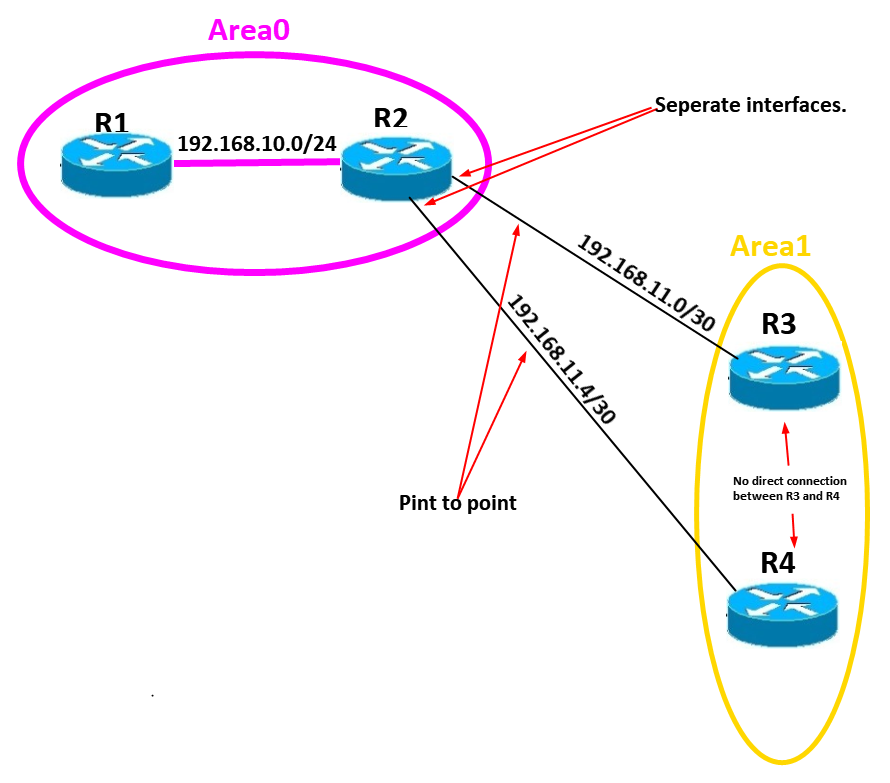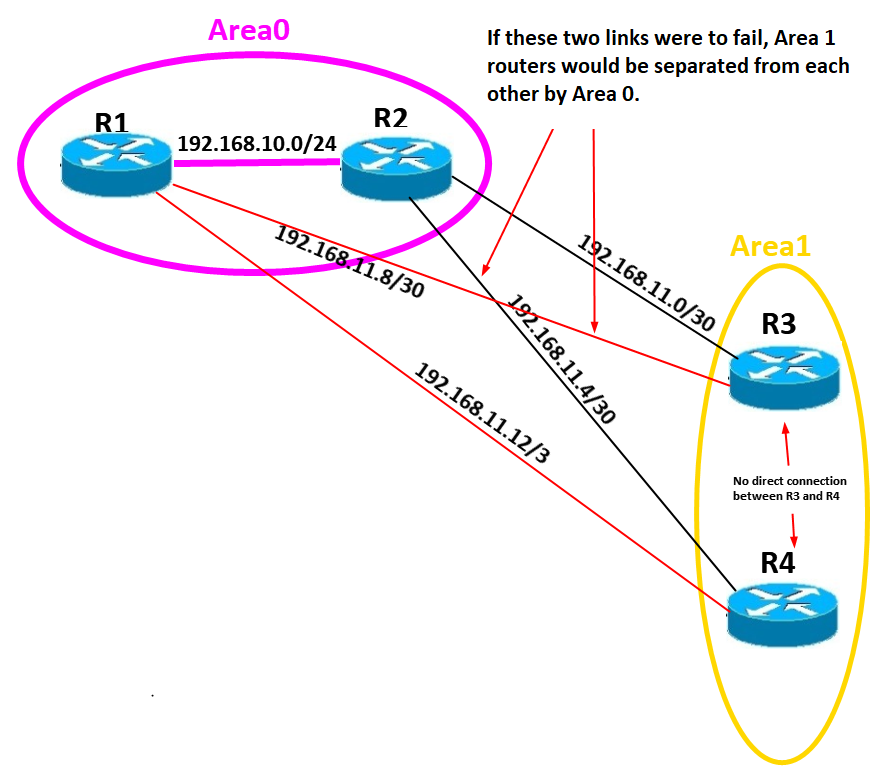Valid OSPF area design
-
Hey ITPro, can someone confirm this is a valid OSPF area design? In this example the ABR (R2) is the only thing connecting R3 and R4 via two separate point-to-point connections. Just wanted to confirm that R3 and R4 didn't need to be connected in some way directly in order for this to be valid?
Regards,
Adam Tyler
-
Bump...... Anyone ?
-
Hi Adam!
I am in the office today at my desk next to Ronnie's and we are stunned that we missed this post. So sorry. It slipped through the other posts some how I guess.
Anyways, we chatted about this very interesting design and we did not come up with anything in OSPF that would prevent this design from functioning!
Have you tried labbing it up yet? It would be a fun one to investigate in operation.
-
@Anthony-Sequeira No worries Anthony. I haven't put this in a lab just yet, I am short on routers at the moment (Turning up two new sites this week).. On paper, I think this area configuration would be fine, but you have to ask, why set it up this way? My reasons are only administrative/documentation driven.. You see each of our smaller remote locations is referenced by a number. So let's say Area 1 represents a location we call Location 1. Then when we go to deploy Location 2 I will setup an Area 2 and so on....
In this particular instance we have a remote location with two buildings and two separate internet connections. So now I have a clash between my area naming convention and the physical locations. I have two Location 1's essentially. In the end, the configuration would end up looking something like this where both routers in Area 1 would be connected to both routers in Area 0. This could be a problem under certain link failure scenarios. For example....

So I am thinking it best in my particular scenario that instead of making both of "Location 1" sites use the same area, probably better to do something like Area 1 and Area 2001 or in dotted decimal, .0.0.7.209..
That way each "Location 1" site can be an island and there is no danger of the area entering a split brain scenario depending on what links fail. Having the second location be up above 2000, will allow me to keep the naming convention sequence for other sites too.. Unless we deploy over 2000 bases, yikes that'd be some huge growth.
This all sounding sane? Any errors in logic?
Regards,
Adam Tyler -
I came across this post late, but I thought it was very interesting. I would have never thought of trying this. So I quickly labbed both diagrams exactly, except I added loopbacks to each router, and they both worked. Every router can ping all the other routers.
-
@Adam-Tyler said in Valid OSPF area design:
That way each "Location 1" site can be an island and there is no danger of the area entering a split brain scenario depending on what links fail. Having the second location be up above 2000, will allow me to keep the naming convention sequence for other sites too.. Unless we deploy over 2000 bases, yikes that'd be some huge growth.
I've only just come across this post as well.
I'm just curious - whats the reason you are making a separate area for those routers? Are you doing this so that you have a summarization point in the network (At the ABR?) Or for future expandability reasons? -
@Andrew-Reynolds Hi Andrew. I get into my reasons for isolating our Area 0 from other sites in this post. Let me know if you have any follow up questions.
https://forums.itpro.tv/topic/2973/ospf-stub-areas/4
Regards,
Adam Tyler -
@Jennifer-Ringler Interesting. So no routing issues or OSPF anomalies under the failure condition that I specified? You essentially had two area 1 routers connected to completely separate area 0 ABRs? No direct connectivity between the Area 1 routers?
Regards,
Adam Tyler -
@Adam-Tyler That's correct. there was no connection between the two routers in area 1 and it still worked. Every router could ping all the other routers with no issues.